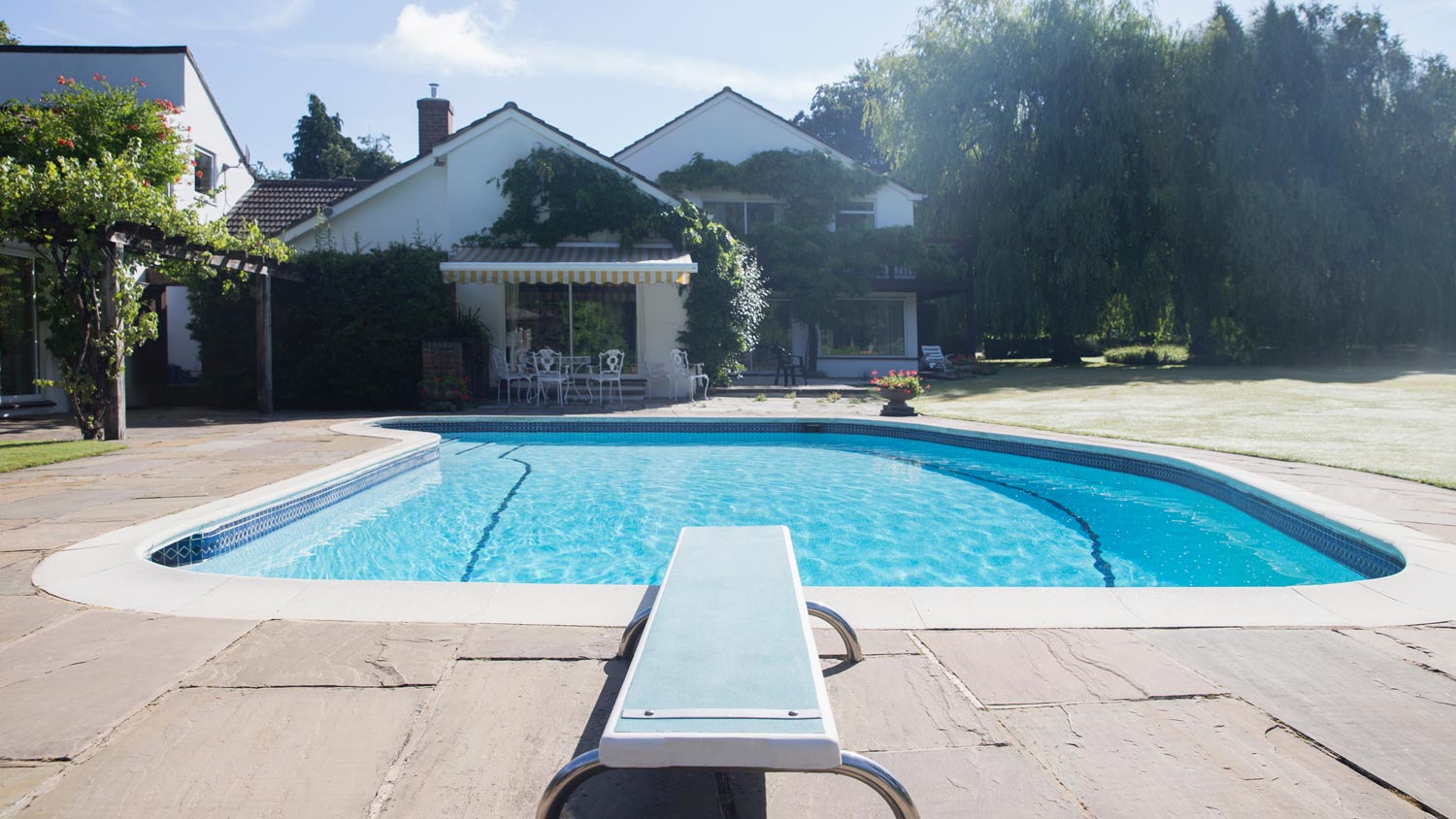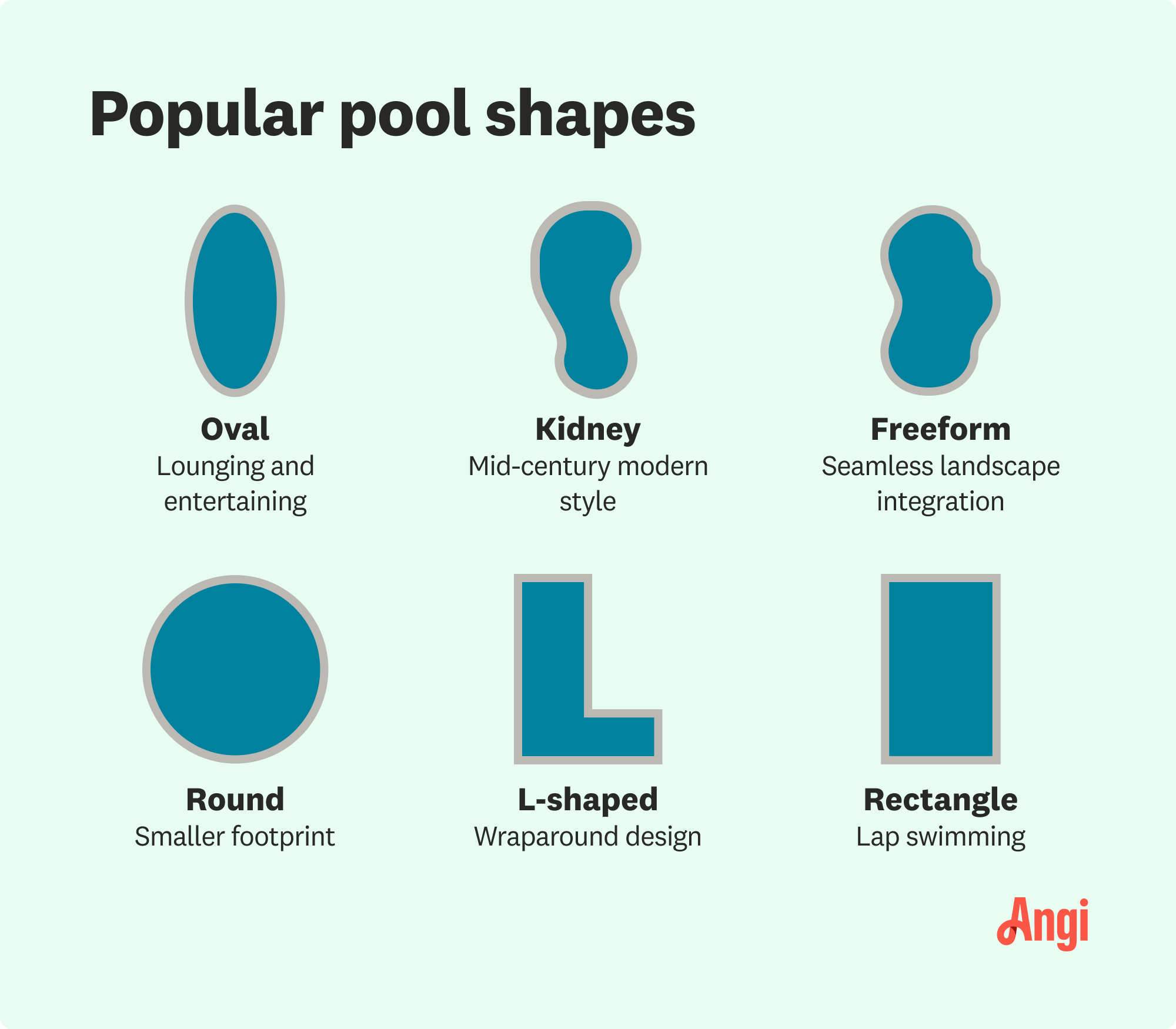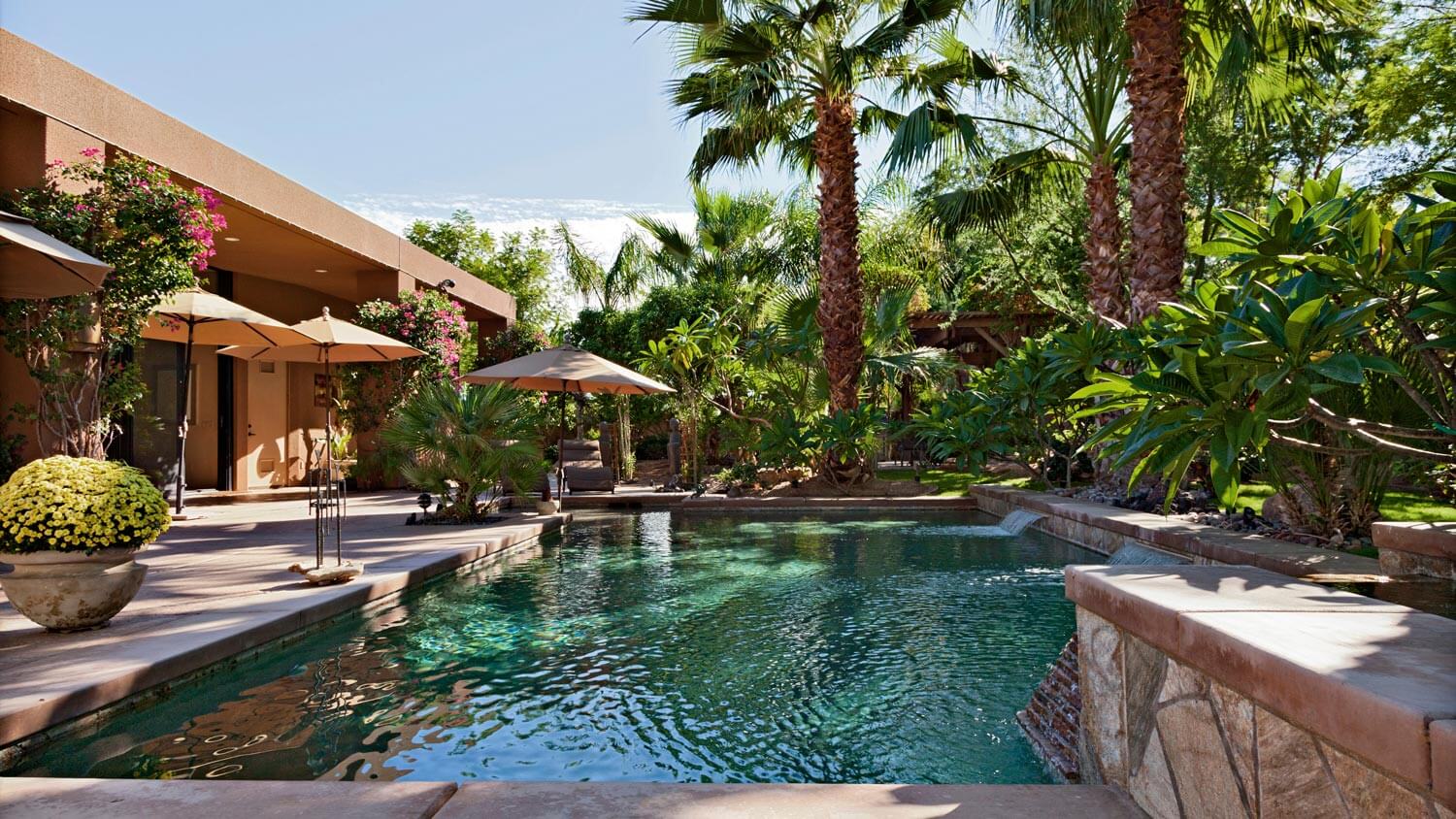
When murky waters and slimy surfaces get in the way of your pool parties, it may be time to consider the cost to acid wash a pool. Refresh your pool by bringing in the pros.
Our step-by-step guide will keep your plans afloat


Daydreaming of summer fun in your own backyard pool? Installing a swimming pool means making a lot of decisions about what that pool looks like, the materials it’s made of, and how it fits in your yard. Our 10 tips will help you design a pool that’s everything you’ve dreamed of and more.
There’s an ocean of possibilities when it comes to designing your pool. Your backyard could resemble a tropical lagoon, rustic getaway, athlete's oasis, or hotspot for the neighborhood kids.
To determine what type of pool is right for you, establish a vision for your ideal pool, and focus on your primary uses for the pool and what type of vibe you'd like to create. You can make a custom pool design geared toward recreation, lap swimming, kid fun, or relaxation. Talk with your other household members to create a vision for your pool that works for everybody.
Of course, the type and size of your pool is determined by your budget. The cost to install an inground pool ranges from $39,000 to $70,000, or about $90 to $160 per square foot. Size is typically the largest cost factor for building a pool, along with the material and labor. In general, curved pools maximize square footage with less perimeter, helping to reduce your costs.
Plan out your budget parameters, and then research how much pool you can afford without going overboard. Keep room in your budget for extra expenses such as underwater lighting, a pool cover, and landscaping around the perimeter. You also want to factor in the annual cost of maintaining a swimming pool and additional building expenses like the cost of excavation.
While you can make a splash in a small pool, some homeowners prefer the versatility of a pool that stretches from one end of the backyard to the other. Inground pools come in various sizes, but you can also customize your pool's size based on the available space. When finalizing a pool size, consider how many people you expect to enjoy it and how it fits into your overall project vision.
| Pool Type | Common Sizes (in feet) |
|---|---|
| Traditional Inground | 16-by-32, 18-by-36, 20-by-40 |
| Lap | 10-by-40, 8-by-50, 6-by-40 |
| Plunge | 6-by-10, 8-by-12, 8-by-20 |
| Freeform | 12-by-30, 15-by-35, 18-by-40 |
You can also follow these steps to create a mockup of your backyard to plan your pool's size:
Measure your yard or reference the measurements in your property deed.
Draw a rough blueprint of your outdoor space on a piece of paper.
Mark on your drawing any elements that impact where your pool goes, such as trees, decking, or fences.
Draw the ideal pool location and approximately how large you plan to make it.
Once you have an idea of your pool plan, you should work with a local pool installer to finalize your ideas and ensure your yard meets requirements and code for putting in a pool.

Whether you’re excited to do cannonballs off the diving board or sunbathe in the shallow end, you’ll need to consider your ideal pool depth. You can customize your pool design to almost any depth, but if you want to dive into your pool, it typically needs to be at least eight feet in the deep end. Check your local ordinances to ensure you meet the area codes or talk with your pool installer about regulations.
The shape of your pool serves both function and style. For example, curved shapes provide a lagoon-type feel, while geometric pools create a modern, structured look. You might opt for an oval or kidney-shaped pool if you have a wide yard.
Pool shapes often come in slight variations, allowing you lots of options for customization.

Once you’ve decided on the size and shape of your inground pool, you’ll need to consider what material to make it out of. Inground pools are generally made of one of three materials:
Fiberglass: Fiberglass pools are pre-constructed and shipped to your home for installation. Because they’re prefabricated, you’ll be limited in design options, but they’re a great choice if you’re looking to minimize the time it takes to build your pool.
Vinyl: Vinyl pools are the most budget-friendly option, but they have a shorter lifespan than other materials and are more susceptible to damage from wear and tear.
Concrete: Concrete is a popular choice for custom pools, as it can be poured into any shape and size. Concrete pools are durable and do not corrode, but they come with a higher upfront price tag and take longer to install than other pools.
In addition to choosing the material your pool is made of, you’ll also want to decide on materials for the pool surround or deck, fencing, and other features that accompany your pool.
When planning a pool project, it’s important to incorporate features that will keep every swimmer safe, especially if you have children and pets. Plan to follow pool safety tips like installing a fence around your pool area to ensure no one enters without supervision. The cost of a pool fence is typically around $15 to $25 per linear foot, but there are options to fit various budgets.
You can also install safety features such as a pool alarm or safety drain covers to give you more peace of mind. While the new pool is meant for fun, it’s also crucial to keep safety top of mind.
When planning your outdoor space, be sure to complement your home’s façade and style. If your house is traditional or Victorian, echo the look with an elegant pool scheme. If your house is modern, consider a sleek design. One way to create a cohesive look is by styling your pool exterior with pavers, available in various colors, textures, shapes, and materials.
That way, you can coordinate your pool with the look of your home's exterior to foster harmony. You might choose browns to coordinate with a natural or rustic vibe or light tones for a beachy or modern feel. Mix in various textures and patterns in your pool design for a united look.

Once you finalize the details of your pool’s size, shape, and depth, it’s time to shop around for the perfect pool upgrades to make your backyard oasis stand out. The fine details enhance your pool’s atmosphere to make it feel even more relaxing or energizing.
Consider the following features to create a custom vibe:
Swim-up seating
Steps or gradual pool entry
Tanning ledge
Natural rocks or stones
Waterfall, rain curtain, or spillway
Fountain or deck jet
Slide
Diving board
Custom tile or mosaics
Raised wall
Like any room in your home, lighting plays a key role in your pool’s ambiance. Consider adding lighting inside and around the pool to create a functional pool atmosphere, especially if you plan to take morning dips or sunset soaks. Make the energy-efficient choice to install cost-effective underwater LED lights that last longer than incandescent bulbs.
Jenna Jonaitis contributed to this piece.
From average costs to expert advice, get all the answers you need to get your job done.

When murky waters and slimy surfaces get in the way of your pool parties, it may be time to consider the cost to acid wash a pool. Refresh your pool by bringing in the pros.

Removing a pool is a labor-intensive job, but the investment can be worth it. Use this pool removal cost guide to estimate how much you’ll pay for the service.

Thinking about switching from chlorine to salt water in your pool? Learn how much a saltwater pool conversion costs in this informational guide.

The type of pool finish you choose is the best way to both show off your personal style and protect your pool in the long run. Let's walk through your options for pool finishes.

Ready to say goodbye to your swimming pool and hello to lush, green grass? Learn how to fill a swimming pool with dirt to ensure proper drainage for an even yard.

Knowing how much salt to add to a pool will prepare it for use on a hot day. Use these calculations to keep your pool salt levels in the right spot.